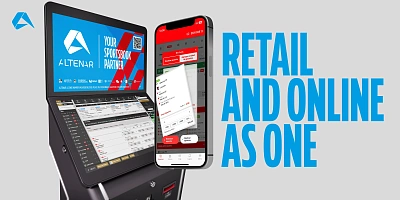The world of trading and risk management has advanced rapidly in recent years thanks to technology—but how will it shape the sportsbook of 2030?
Looking ahead to 2030, Dinos Stranomitis, Director and COO at Altenar, believes the future of sports betting lies in developing software that can automatically adjust probabilities based on real-time data availability.
Currently, Stranomitis believes that pricing is overly influenced by betting volumes, which doesn’t always reflect accurate odds.
“If we look at what’s happening today, there are companies that determine pricing across sports and leagues,” he shared in Altenar’s latest video. “Bookmakers initially offer small limits, but these increase as we approach kick-off.
“This increase is mostly driven by betting volumes rather than actual news. So the question is—does the news actually come from betting activity?”
Over the next decade, Stranomitis expects this trend to reverse. Ideally, betting activity should reflect the news, with pricing already updated automatically to incorporate it.
In simple terms, bookmakers will rely on intelligent software that calculates probabilities and pricing without requiring traders to manually adjust odds based on player updates or team announcements.
Stranomitis continued: “I truly believe that by 2030, trading and risk management will look very different. We’ll see software that can input full details about each game—every player’s data and performance metrics.
“The software will then generate probability suggestions, which inform pricing. If breaking news emerges about a game, the system will take it into account and adjust the odds accordingly. It’s that straightforward.”
However, there are some prerequisites. For instance, which leagues will share that level of detailed statistics?
For Stranomitis, access to official data is critical. Software providers must integrate directly with on-the-ground data sources, allowing traders to adjust odds without needing to watch the game live.
He acknowledged that data availability varies by sport, league, and federation. Some provide official data, while others still rely on unofficial sources due to limited infrastructure.
“Everything will be fed directly from the data source,” he said. “Even during live games, statistics will influence pricing—regardless of whether goals are scored.
“For example, if a favorite starts at even money, their price may slightly drop—not because of a goal, but due to strong performance metrics. More shots, more attacks—these indicators will prompt the system to adjust prices in real time.”
He continued: “This type of pricing will rely not only on overall betting volumes but on what I call ‘clever money’—that is, bets placed by users with a proven record of success.”
Stranomitis explained: “A bet from a savvy punter should carry more weight than a casual flutter. What we currently see is pricing driven by volume. But in the future, sportsbooks must prioritize ‘clever money’ and disregard ‘funny money.’”
He concluded by pointing to one final frontier in data-driven accuracy—geolocation technology.
“In the Premier League, for instance, we could see balls embedded with microchips, giving data sources real-time positional tracking.
“Even players’ boots could contain sensors. If we can track the ball and player movements precisely, we can refine our probability models even further.
“Such innovations are already being tested. Within the next 10 years, I believe we’ll see these technologies rolled out widely to help calculate live probabilities with unparalleled precision.”
Written by SBC News













